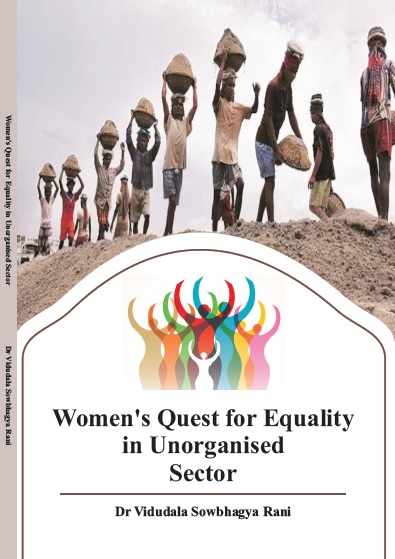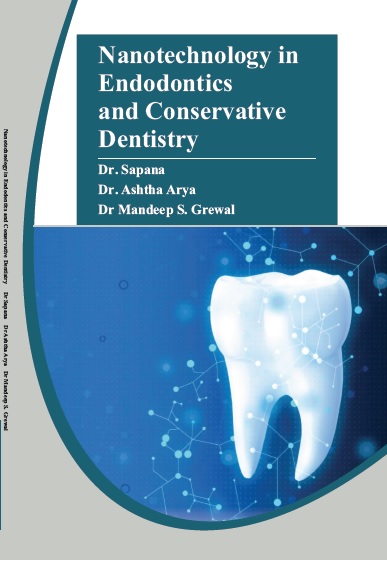SOCIAL SCIENCE AND HUMANITIES

Women's Quest For Equality In Unorganised Sector
by Dr. Vidudala Sowbhagya Rani
ISBN Number : 978 - 93 - 91478 - 69 - 8
Authors Details
| Author Name | Image | About Author |
|---|---|---|
| Dr. Vidudala Sowbhagya Rani |  |
Dr. V. Sowbhagya Rani, Faculty of Law at Sri Venkateswara University,
Tirupati, is working from 2007 onwards. She was graduated from
Padmavati Mahila Visvavidyalayam (Women's University) and
completed both LL.M and Ph.D from the same University and also
completed PG Diploma in Industrial Relations and Personal
Management and PG Diploma in in Human Rights and Social
Development from Sri Venkateswara University, Tirupati. She has been
awarded with Doctor of Philosophy in Law under eminent supervision of
Prof. K. Umadevi, Former Rector of Sri Padmavati Mahila University,
Tirupati. She attended and presented more than 35 National and
International Conferences. She has published about 25 papers with high
impact factors in UGC recognised repute journals and authored two
books and edited three books. All these are published by the
internationally recognised publishers. She has been awarded with
“Women of Distinction” (Law) in March, 2016 by Venus International
Foundation, Chennai, Tamil Nadu. She used to take classes to UG, PG of
Law, Human Rights, and Engineering UG and PG Students at various
Universities. Further she visited USA, Taiwan, Malaysia. With her
humanity, honesty, hardworking, duty mind, devotion, dedication, good
conduct and scholarliness wherever she was, she was considered as good
academician. |
Book Description
Contract labour in the unorganized sector refers to a system where individuals are hired on a contractual basis to perform specic tasks or services. This arrangement is prevalent in industries or sectors that lack formal organization or regulation, making it a common practice in developing countries. In the unorganized sector, contract labour often works without the benets and protections offered to regular employees. They typically lack job security, social security benets, and access to adequate healthcare, among other entitlements. Additionally, their wages tend to be lower than those of formal sector employees, and they may face exploitative working conditions. The unorganized sector encompasses various industries, including agriculture, construction, manufacturing, and services. Contract laborers in these sectors may be engaged for short-term projects, seasonal work, or specic assignments. Their employment is usually based on verbal or informal agreements, resulting in limited legal protections.Lack of regulation and oversight in the unorganized sector can lead to abuses and unfair treatment of contract laborers. They may be subjected to long working hours, unsafe working conditions, and minimal opportunities for career growth or skill development. Furthermore, due to the absence of formal contracts, these workers often face difculties in seeking legal recourse for labour-related disputes. Efforts are being made to address the challenges faced by contract labour in the unorganized sector. Advocacy groups and labour organizations are working towards promoting fair labour practices, advocating for legislation to protect the rights of contract workers, and raising awareness about their plight. Governments and policymakers are also recognizing the need for better regulation and social security provisions to safeguard the interests of these workers. Improving the conditions for contract labour in the unorganized sector requires a comprehensive approach that includes legal reforms, enforcement of labour standards, provision of social security benets, and creating opportunities for skill development and formal employment. Such measures can help ensure fair treatment, better working conditions, and improved livelihoods for contract laborers in the unorganized sector. Introduction chapter highlights the nature and historical background of contract labour, development of contract system in India has been explained. The second chapter described about national and international parameters of contract labour in unorganised sector. Third chapter deviated to contract labour legislations in India. Fourth chapter elaborated social security measures particularly for the welfare the unorganised labour in India. Fifth Chapter highlighted Judicial Activism and the Last Chapter provide summary and conclusion.













